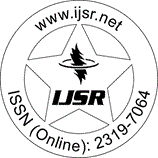Downloads: 8
India | Anaesthesiology | Volume 14 Issue 3, March 2025 | Pages: 970 - 973
Evaluation of Intranasal and Intravenous Dexmedetomidine for Attenuation of Hemodynamic Surge during Laryngoscopy and Endotracheal Intubation in Patients Undergoing Elective Laparoscopic Surgery
Abstract: Laryngoscopy and endotracheal intubation elicit significant hemodynamic stress responses, which can be detrimental, especially in patients with cardiovascular risks. Dexmedetomidine, a selective alpha-2 adrenergic agonist, mitigates these effects through its sedative, anxiolytic, and sympatholytic properties. This study compares the efficacy of intranasal versus intravenous dexmedetomidine in attenuating hemodynamic surges during laryngoscopy and intubation in patients undergoing elective laparoscopic surgery. A prospective, randomized, double-blind controlled trial was conducted on 70 adult patients (35 per group). Patients received either intranasal (1 mcg/kg) or intravenous (1 mcg/kg) dexmedetomidine 45 minutes before induction. Hemodynamic parameters, including heart rate (HR), systolic blood pressure (SBP), diastolic blood pressure (DBP), and mean arterial pressure (MAP), were monitored preoperatively, during intubation, and post-intubation. Sedation was assessed using the Ramsay Sedation Scale (RSS). Dexmedetomidine, a selective alpha-2 adrenergic agonist, is valued in anesthesia for blunting hemodynamic surges during laryngoscopy and intubation. This prospective, randomized, double-blind trial compared intranasal (1 mcg/kg) and intravenous (1 mcg/kg) dexmedetomidine in 70 adults undergoing elective laparoscopic surgery. Administered 45 minutes pre-induction, both routes effectively stabilized heart rate, blood pressure, and mean arterial pressure post-intubation (P > 0.05), though intravenous delivery yielded deeper preoperative sedation (P = 0.014). Intranasal administration proved a non-invasive, well-tolerated alternative, suggesting its potential, especially for pediatric or uncooperative patients. Further research into plasma levels and long-term effects is recommended. These findings suggest that intranasal dexmedetomidine is a viable and patient-friendly alternative to intravenous administration for attenuating hemodynamic stress responses during airway manipulation. Its ease of administration suggests particular advantages for pediatric or uncooperative patients in broader applications. Further studies evaluating plasma concentrations and long-term outcomes are warranted to optimize dosing strategies for diverse clinical scenarios.
Keywords: Dexmedetomidine, Hemodynamic response, Laryngoscopy, Intranasal administration, Intravenous administration, Anesthesia
How to Cite?: Dr. Ritwik Dash, Dr. Deepinder Kaur, "Evaluation of Intranasal and Intravenous Dexmedetomidine for Attenuation of Hemodynamic Surge during Laryngoscopy and Endotracheal Intubation in Patients Undergoing Elective Laparoscopic Surgery", Volume 14 Issue 3, March 2025, International Journal of Science and Research (IJSR), Pages: 970-973, https://www.ijsr.net/getabstract.php?paperid=SR25319230138, DOI: https://dx.doi.org/10.21275/SR25319230138
